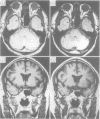Abstract
Three patients with Tolosa-Hunt syndrome (THS) were examined using computed tomography (CT), orbital venography and magnetic resonance imaging (MRI). CT of the brain showed no definite abnormality in two patients, right optic nerve enlargement and an abnormal area around the orbital apex in one patient. Orbital venography showed an occlusion of the superior ophthalmic vein in one of three patients. MRI showed an abnormal soft tissue area in the cavernous sinus, with intermediate to high signal intensity on T1- or intermediate weighted images. There was clinical improvement following corticosteroid therapy and the abnormal soft tissue on MRI decreased in volume and in signal intensity, although this was equivocal in one patient. Thus MRI proved to be useful in demonstrating lesions in the cavernous sinus in patients with THS.
Full text
PDF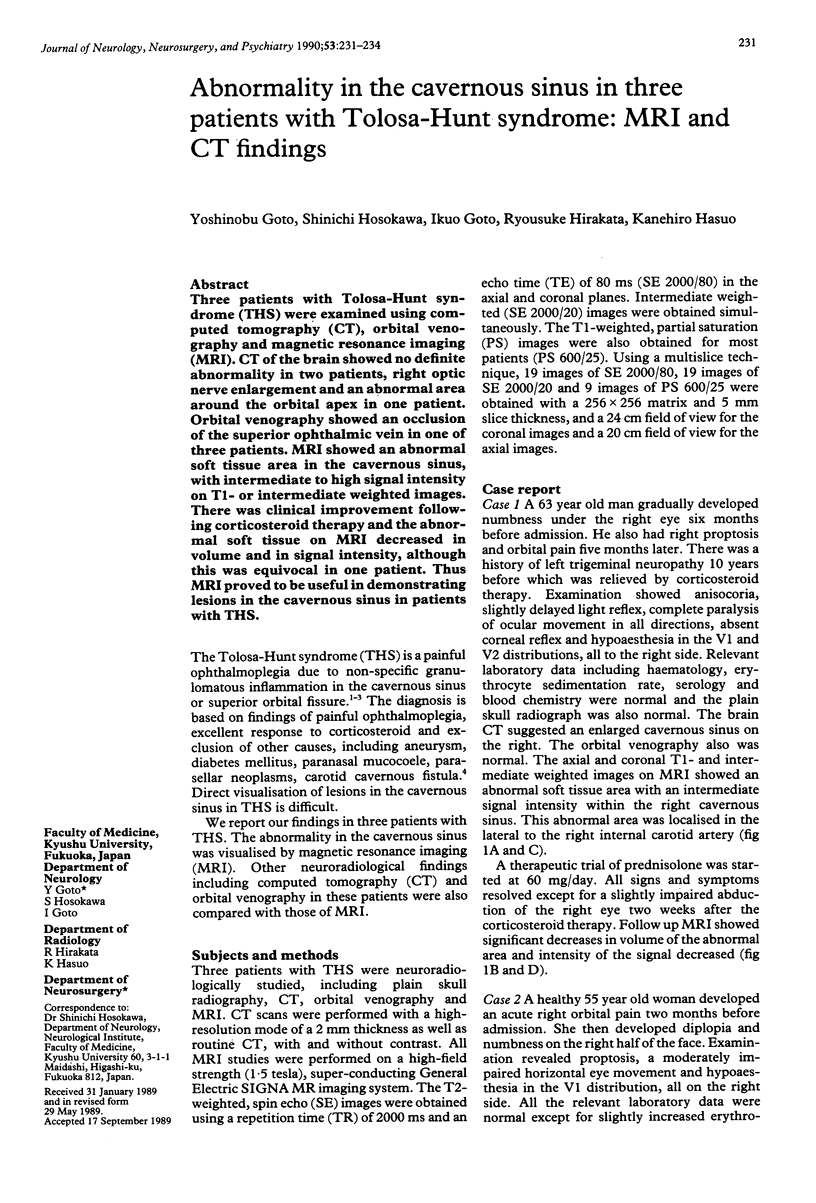
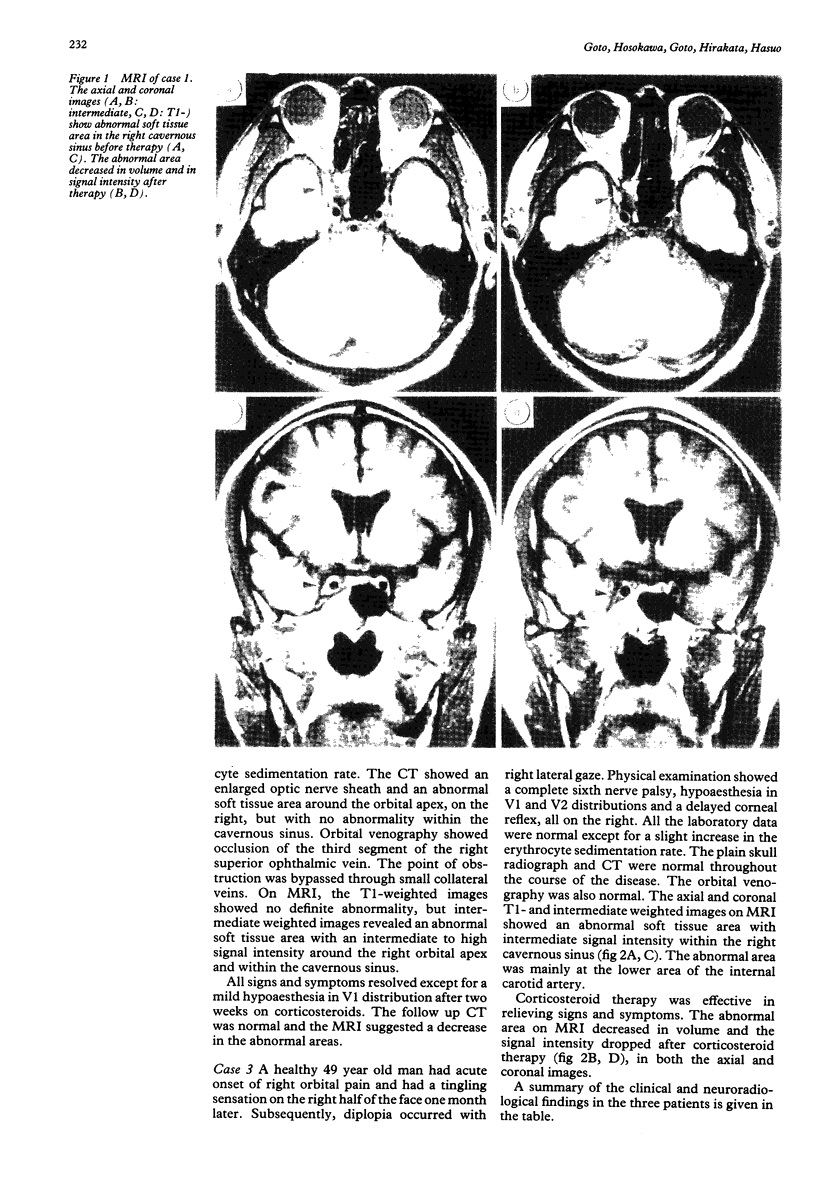
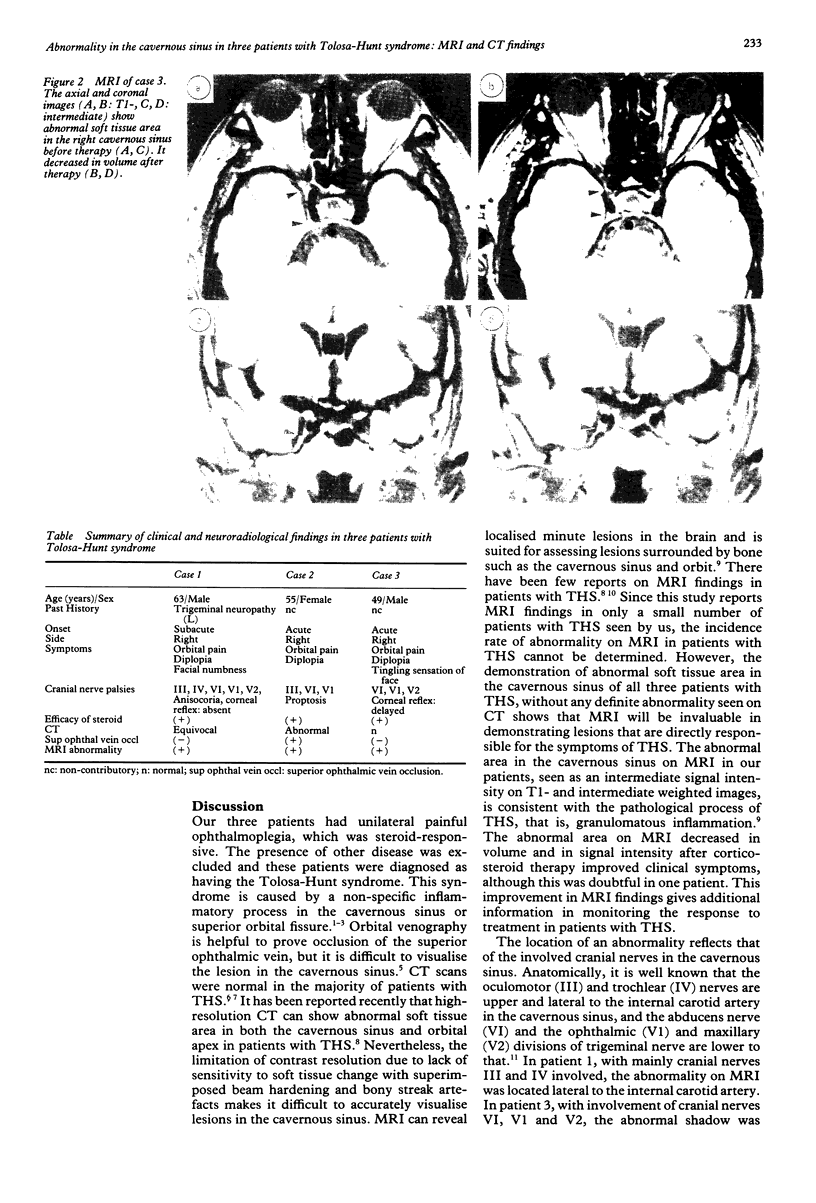
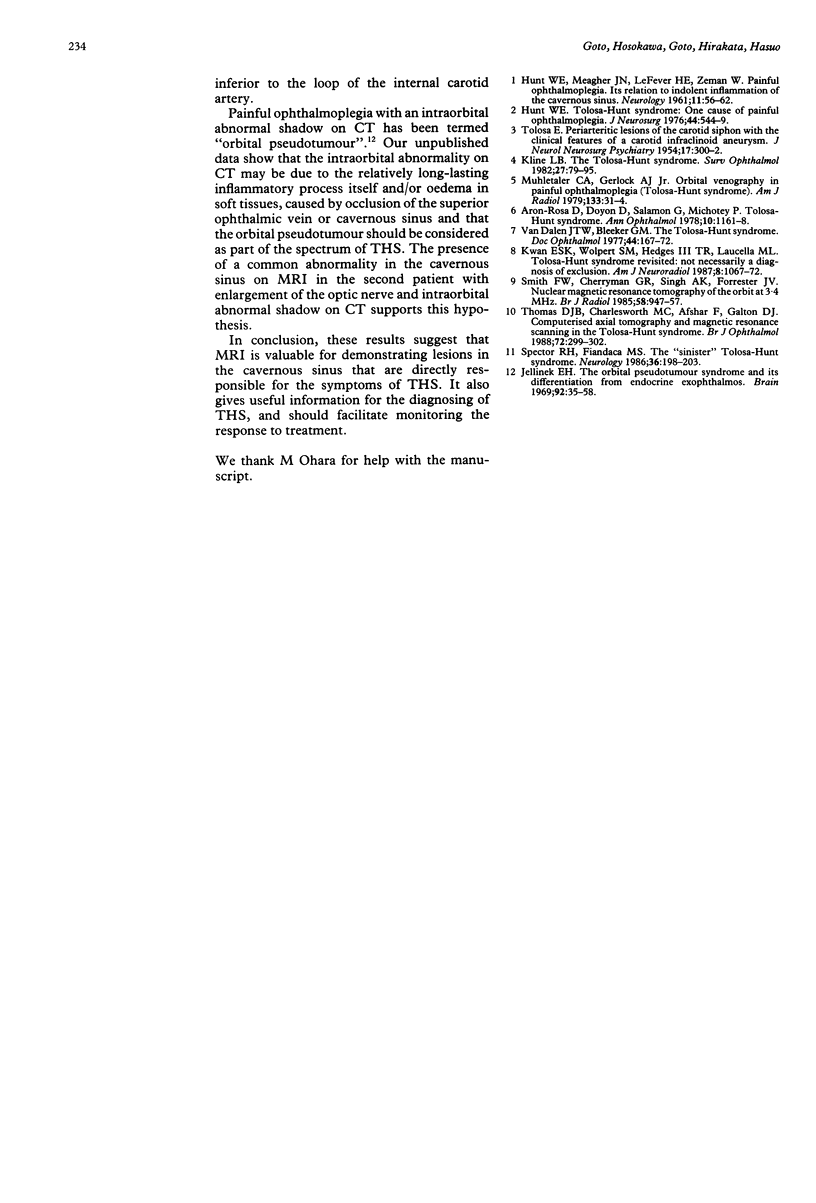
Images in this article
Selected References
These references are in PubMed. This may not be the complete list of references from this article.
- Aron-Rosa D., Doyon D., Salamon G., Michotey P. Tolosa-Hunt syndrome. Ann Ophthalmol. 1978 Sep;10(9):1161–1168. [PubMed] [Google Scholar]
- HUNT W. E., MEAGHER J. N., LEFEVER H. E., ZEMAN W. Painful opthalmoplegia. Its relation to indolent inflammation of the carvernous sinus. Neurology. 1961 Jan;11:56–62. doi: 10.1212/wnl.11.1.56. [DOI] [PubMed] [Google Scholar]
- Hunt W. E. Tolosa-Hunt syndrome: one cause of painful ophthalmoplegia. J Neurosurg. 1976 May;44(5):544–549. doi: 10.3171/jns.1976.44.5.0544. [DOI] [PubMed] [Google Scholar]
- Jellinek E. H. The orbital pseudotumour syndrome and its differentiation from endocrine exophthalmos. Brain. 1969 Mar;92(1):35–58. doi: 10.1093/brain/92.1.35. [DOI] [PubMed] [Google Scholar]
- Kline L. B. The Tolosa-Hunt syndrome. Surv Ophthalmol. 1982 Sep-Oct;27(2):79–95. doi: 10.1016/0039-6257(82)90190-4. [DOI] [PubMed] [Google Scholar]
- Muhletaler C. A., Gerlock A. J., Jr Orbital venography in painful ophthalmoplegia (Tolosa-Hunt syndrome). AJR Am J Roentgenol. 1979 Jul;133(1):31–34. doi: 10.2214/ajr.133.1.31. [DOI] [PubMed] [Google Scholar]
- Smith F. W., Cherryman G. R., Singh A. K., Forrester J. V. Nuclear magnetic resonance tomography of the orbit at 3.4 MHz. Br J Radiol. 1985 Oct;58(694):947–957. doi: 10.1259/0007-1285-58-694-947. [DOI] [PubMed] [Google Scholar]
- Spector R. H., Fiandaca M. S. The "sinister" Tolosa-Hunt syndrome. Neurology. 1986 Feb;36(2):198–203. doi: 10.1212/wnl.36.2.198. [DOI] [PubMed] [Google Scholar]
- TOLOSA E. Periarteritic lesions of the carotid siphon with the clinical features of a carotid infraclinoidal aneurysm. J Neurol Neurosurg Psychiatry. 1954 Nov;17(4):300–302. doi: 10.1136/jnnp.17.4.300. [DOI] [PMC free article] [PubMed] [Google Scholar]
- Thomas D. J., Charlesworth M. C., Afshar F., Galton D. J. Computerised axial tomography and magnetic resonance scanning in the Tolosa-Hunt syndrome. Br J Ophthalmol. 1988 Apr;72(4):299–302. doi: 10.1136/bjo.72.4.299. [DOI] [PMC free article] [PubMed] [Google Scholar]
- van Dalen J. T., Bleeker G. M. The Tolosa-Hunt syndrome. Doc Ophthalmol. 1977 Sep 30;44(1):167–172. doi: 10.1007/BF00171468. [DOI] [PubMed] [Google Scholar]



